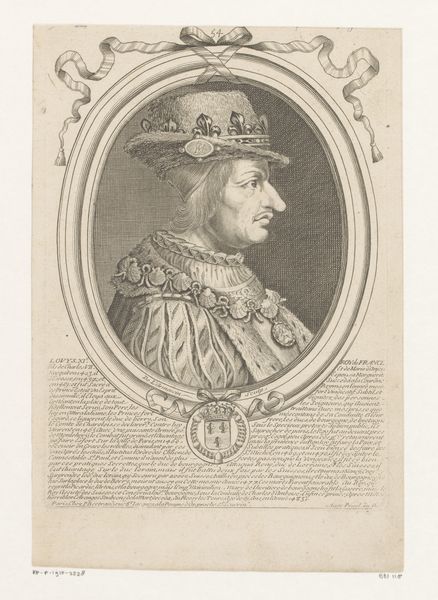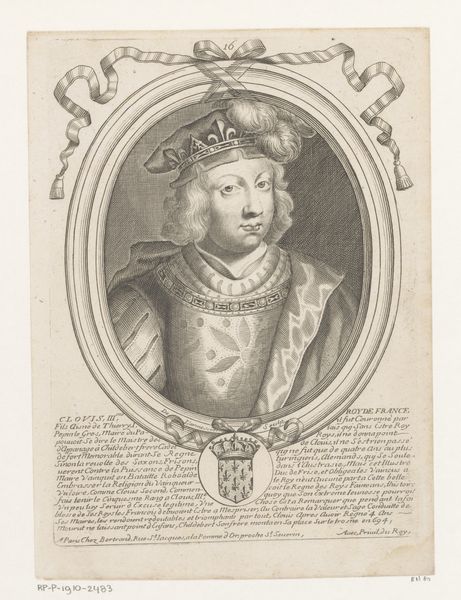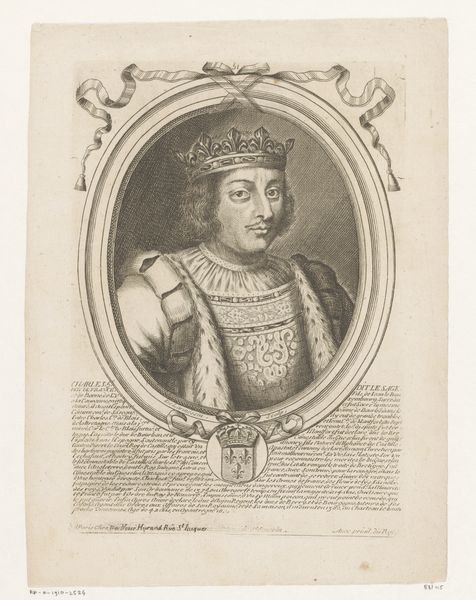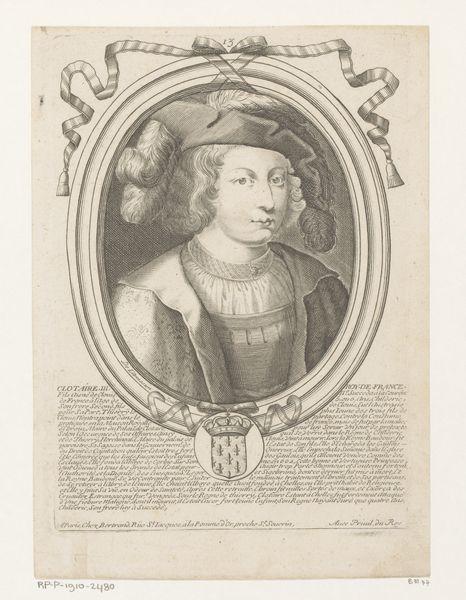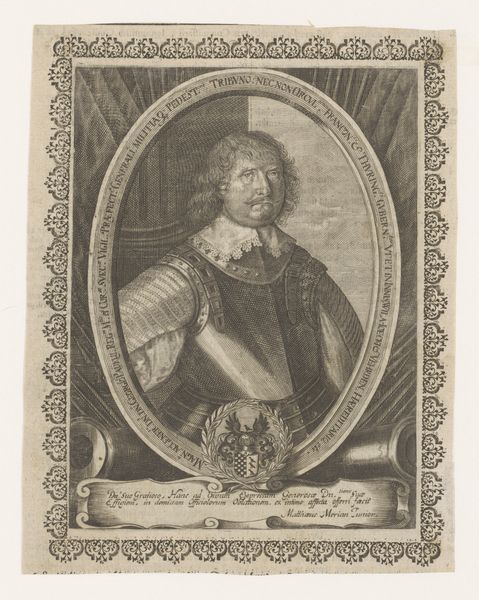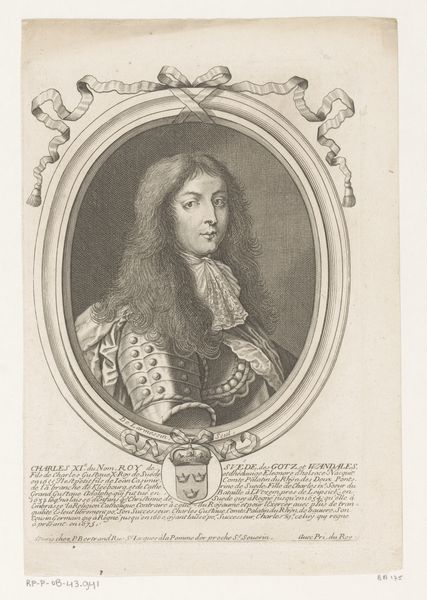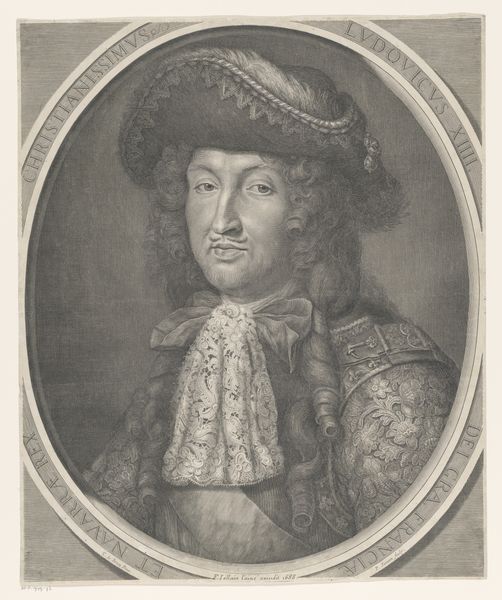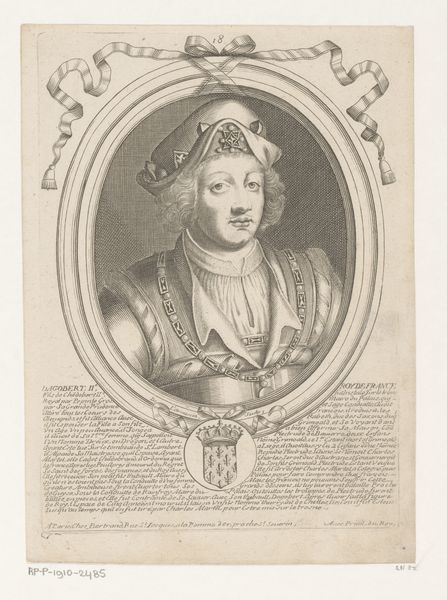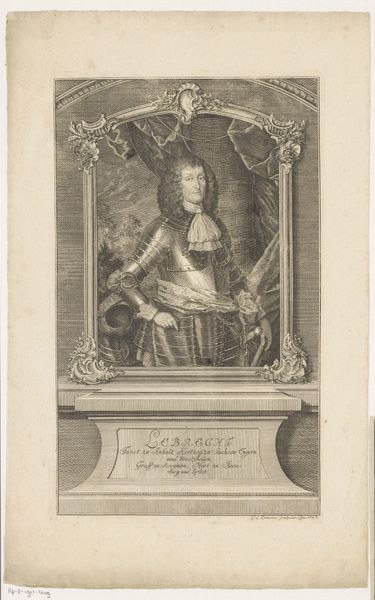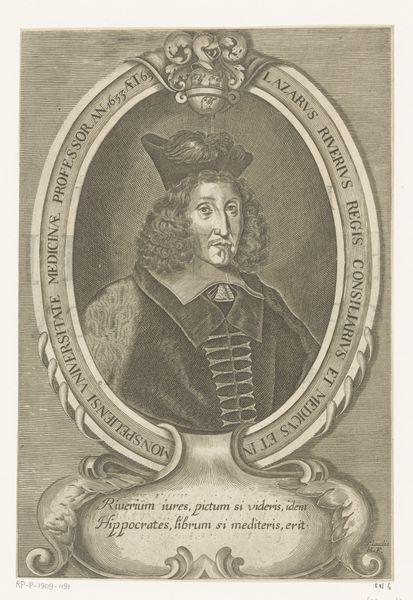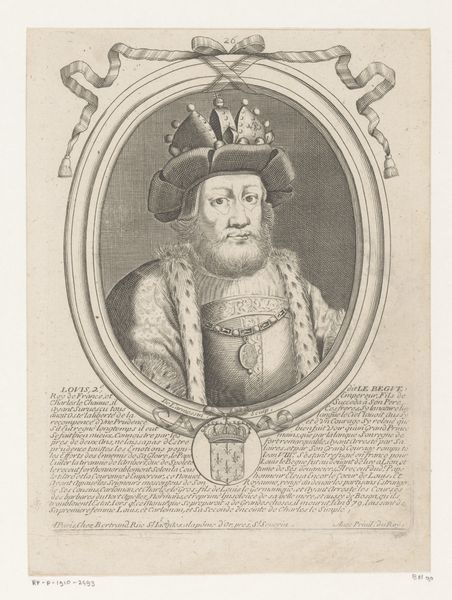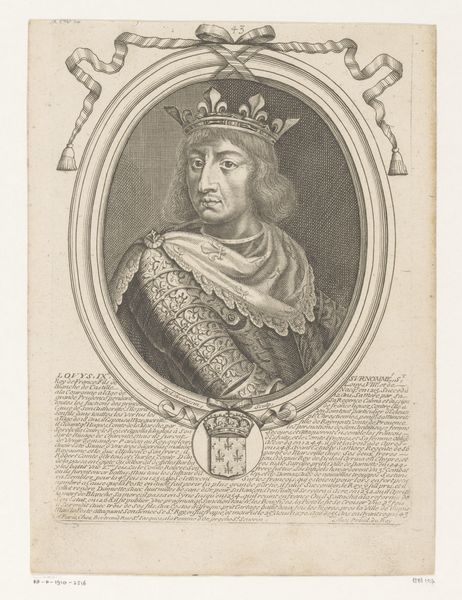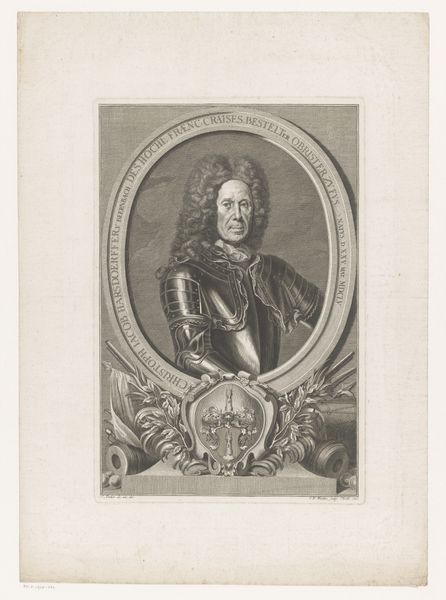
graphic-art, print, intaglio, engraving
#
portrait
#
graphic-art
#
baroque
# print
#
intaglio
#
old engraving style
#
traditional media
#
history-painting
#
engraving
Dimensions: height 237 mm, width 172 mm
Copyright: Rijks Museum: Open Domain
Curator: Here we have a rather striking engraving from between 1647 and 1678, attributed to Nicolas de Larmessin I. It’s a portrait of Clovis II, a king of the Franks from the Merovingian dynasty. Editor: My first thought? The detail is exquisite, especially the rendering of the clothing. I wonder about the material realities involved in producing something so precise through intaglio printmaking. Curator: Indeed. The choice of intaglio, specifically engraving, allowed for very fine lines, ideal for conveying the richness of his garments and the details of his royal regalia. This reflects the baroque aesthetic, aiming to impress upon the viewer the power and status of the subject. Editor: Power, yes, but what kind? Is it inherent in the person or derived from these symbols meticulously etched? Look at the hat—the textiles, the decoration, how long would it take to make and by how many skilled hands. Then the same efforts mirrored across the production of the engraving itself! Curator: That's precisely where its value lies historically. Portraiture like this solidified royal authority through visual representation. Circulating these images allowed the monarchy to project power throughout the realm and beyond. Clovis II himself wasn't particularly well-regarded by historical accounts, so the image does a lot of work. Editor: Interesting to frame it as "work." I think we have to acknowledge the social networks underpinning all these layers of representation. Craftspeople reliant on noble patronage, engravers reliant on dissemination... Curator: Absolutely, this portrait exists within a network of patronage and power. The text surrounding the portrait, while dense, would offer the viewer of the time additional context. It further situates Clovis within a historical narrative meant to legitimize his reign. Editor: So it's a propaganda piece almost. Made me reflect upon who funded this and those people’s social motivations. Curator: I wouldn’t disagree! Consider its original location, most likely adorning the walls of wealthy patrons or part of a collection meant to demonstrate lineage. Editor: Seeing all the hands and materials, brings to light more of the power relations existing at the time. It offers a really compelling perspective. Curator: Agreed; seeing it as an artifact embedded within its complex social and political context makes the artwork much more significant.
Comments
No comments
Be the first to comment and join the conversation on the ultimate creative platform.
